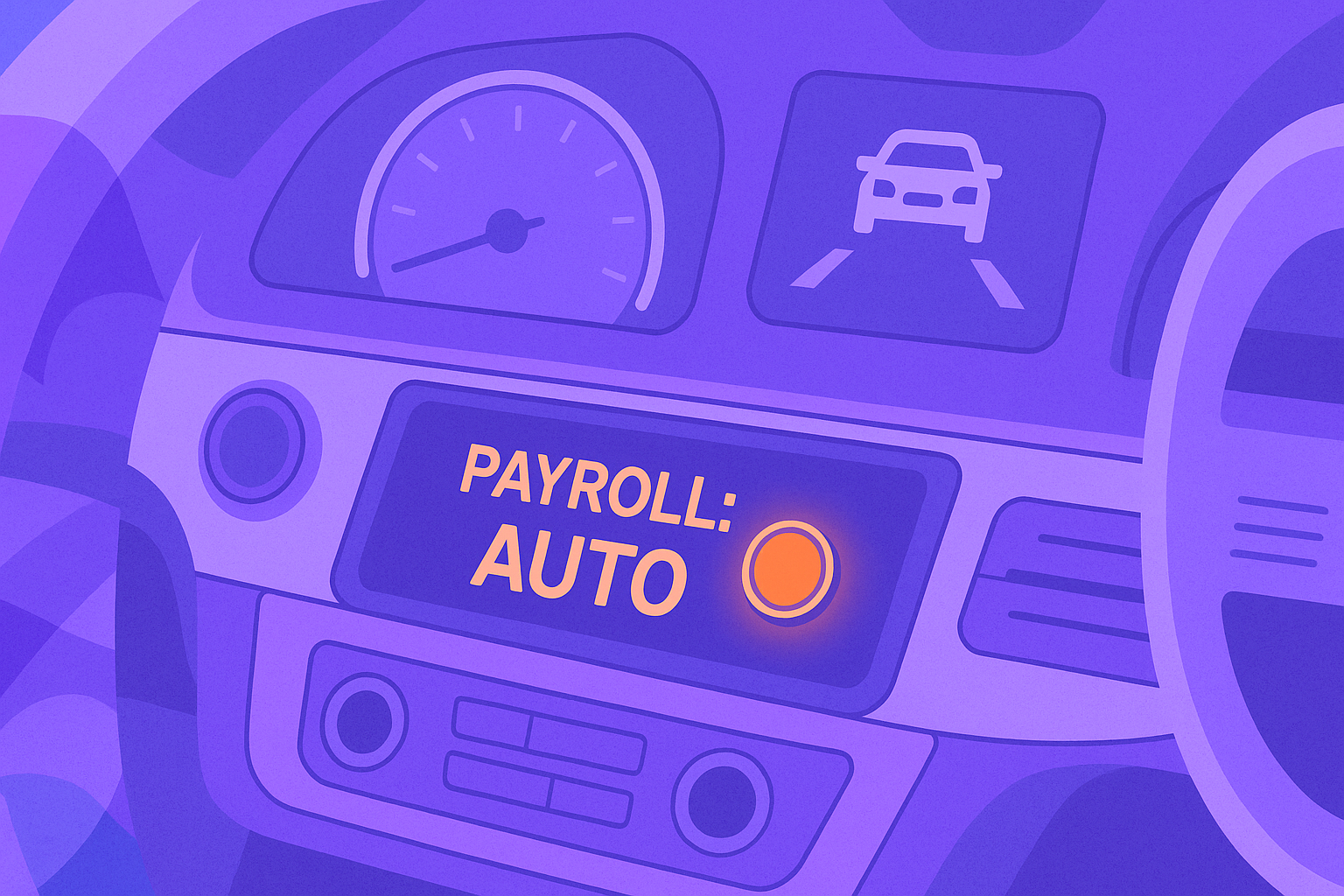The Future of Payroll is Self-Driving — And Small Teams Will Lead It
Here's what payroll looks like when it runs itself.

Summary: Payroll’s future is “self-driving”: systems that do the work automatically and only surface true exceptions for human judgment. Instead of prettier dashboards and manual clicking, self-driving payroll unifies employees and contractors across countries, updates compliance in real time, fixes or prevents issues (like bad bank details), and gives workers self-service access to pay and tax info. The payoff is dramatic cuts in processing time, fewer errors and compliance headaches, and happier teams — letting small, lean companies operate with enterprise-level efficiency. Like Stripe and AWS did for payments and infrastructure, modern payroll automation becomes always-on background infrastructure, enabling borderless growth without adding operational weight.Thirty years ago, running payroll across borders meant armies of compliance officers, accountants, and HR specialists. Today, some teams of five can do it better than companies with 500, but only if they have the right infrastructure.That’s the shift we’re living through right now. Work is global. Teams are distributed. The best companies move fast and adapt even faster. But most payroll systems are relics of another era when workforces were 100% domestic, categories were clear-cut, and operations were manual by default.The result? Modern companies are forced to bend to outdated systems, instead of systems that adapt to them.It’s time for something different.
From better dashboards to payroll that runs itself
The last generation of payroll software gave us better dashboards. More buttons. More reports. But the work, the constant clicking, correcting, and chasing down exceptions still fell to humans.Self-driving payroll changes that.It’s not about removing people from the process. It’s about letting the system do the work and surfacing only what truly needs human judgment.In a self-driving payroll model:- Wrong bank details? The system attempts to fix them automatically, or it is set up to prevent this in the first place.
- Compliance change in a country? Suggested contract changes and calculations update in real time.
- Employee paycheck question? Resolved instantly without landing in a manager’s inbox.
Why this matters now
The winners of the next decade won’t be the companies with the biggest headcount. They’ll be the ones that give small teams the leverage to operate like giants.We’ve seen this before:- Stripe made it possible for lean teams to process global payments without a payments team.
- AWS made enterprise-scale infrastructure possible without having to have your own data center.
- Now, global payroll can run without a dedicated payroll department.
What self-driving payroll looks like in practice
- Unified process across worker types and countries. No separate systems for employees and contractors.
- Real-time compliance updates. Laws, taxes, and benefits are handled automatically.
- Proactive problem-solving. Bank errors, payment issues, and missing data prevented and/or fixed before they cause delays.
- Self-service for employees. Pay stubs, tax forms, and payment details are available without waiting on HR or finance.
The payoff
A truly self-driving payroll system changes the rhythm of work:- Payroll processing time drops dramatically.
- Compliance headaches disappear.
- Employees and contractors are happier knowing their pay will be right and on time.
The next decade of payroll
Just as modern payment systems unlocked entirely new business models, modern payroll infrastructure will make new kinds of companies possible. Companies without borders. Teams without limits. Work that scales without adding operational weight.Self-driving payroll isn’t about technology replacing people. It’s about technology finally doing the work it should have been doing all along so people can focus on building, leading, and growing.Related articles
From startups to beyond, US companies of all sizes use Plane for global payroll, benefits and compliance.
Why We Built Self-Driving Payroll at Plane
In order to meet the evolving needs of global companies, payroll must be able to run itself, so your team can spend time on growing your company.
Why Your Contractor Payment Experience is a Hiring Advantage
How their payment experience can determine whether a contractor recommends you to their peers or declines your next offer.
How Plane Handles Multi-Currency Payments at Scale
Moving money across borders is one of the hardest operational challenges for companies today. But it doesn’t have to be. Here’s how Plane simplifies the process.
